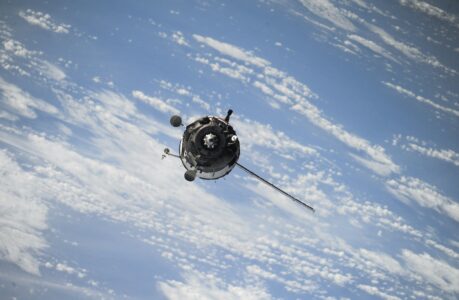As technology advances, the number of satellites orbiting the Earth increases, and the possibility of observing them from the ground becomes more accessible. However, knowing how to locate and track them requires some knowledge and preparation. Here are some tips for observing and tracking satellites in orbit.
Firstly, you need to know when and where to look. There are numerous websites that provide satellite-tracking information, including schedules, visibility maps, and real-time location data. Some of these websites also offer satellite identification guides, which can help you distinguish between different satellites based on their brightness, speed, and trajectory.
Secondly, consider the weather conditions. You will need clear skies to be able to observe satellites effectively. If there are clouds or atmospheric interference, the visibility of the satellite will be reduced. The ideal conditions are a clear night sky with minimal light pollution.
Thirdly, you need a good vantage point. The best places to observe satellites are high-elevation locations, away from the city lights, where the sky is unobstructed. A rooftop or a hilltop can be an excellent spot for viewing satellites.
Fourthly, make sure to use the right equipment. You do not need an expensive telescope to observe satellites; a pair of binoculars or a basic telescope will suffice. You can also use a camera to capture images of the satellites as they pass overhead.
Fifthly, practice patience. Observing satellites is not always easy, and it may take some time to locate them in the sky. However, once you spot one, you will be amazed by how fast they move across the sky and how bright they appear.
Lastly, keep track of the satellites you observe. You can use an app or a notebook to record the satellites’ names, trajectories, and other relevant information. This way, you can identify them in the future and observe them again.
How do I know it’s a satellite and not a plane?
It can sometimes be challenging to distinguish between a satellite and a plane in the night sky, especially if you are not familiar with their characteristics. However, some factors can help you differentiate between the two.
Firstly, the speed of the object can be a crucial clue. Satellites move across the sky at a steady, constant speed, whereas planes appear to move more erratically and change direction frequently.
The brightness of the object can also provide a hint. Satellites are usually brighter than planes because they reflect sunlight, whereas planes emit their light from onboard lights. Satellites also do not have flashing lights like planes do.
The altitude of the object can also be a factor. Satellites are much higher than planes, usually in orbit around the Earth at an altitude of hundreds of kilometers. Planes fly much lower, usually below 10 kilometers.
Lastly, the direction of the object can also be an indication. Satellites generally move from west to east or east to west, while planes usually fly in various directions depending on their destination.
Finding the ISS
The International Space Station (ISS) is the largest human-made object in space, and it can be seen with the naked eye from the Earth’s surface under the right conditions. Here are some steps to find the ISS:
- Check the ISS Tracker: Before you start searching for the ISS, it’s helpful to check its position and trajectory. You can use online trackers such as NASA’s “Spot the Station” or “ISS Tracker” to find out when and where the ISS will be visible from your location.
- Find a clear sky: The ISS is visible at night when the sky is dark, and it is not cloudy. The best time to observe the ISS is just before dawn or just after sunset when the sky is dark, but the sun illuminates the ISS.
- Look in the right direction: Once you know when and where to look, face towards the direction specified by the tracker. The ISS appears like a bright star moving quickly across the sky.
- Identify the ISS: The ISS is one of the brightest objects in the night sky, and it moves steadily across the sky in a straight line. It does not blink, flash, or change direction, unlike airplanes or satellites.
- Keep tracking: The ISS is visible for a short period, usually a few minutes, before it disappears below the horizon. Therefore, it’s essential to keep tracking it until it is no longer visible.
Popular satellite tracking apps
There are several popular satellite tracking apps available for both Android and iOS devices. Here are some of the most well-known ones:
- ISS Detector: This app is specifically designed to track the International Space Station (ISS) and other satellites. It provides real-time alerts when the ISS is visible from your location, and it also offers a compass and a map to help you locate it in the sky.
- SkyView: SkyView is an augmented reality app that allows you to point your smartphone or tablet towards the sky to identify constellations, stars, and other celestial objects. It also features a satellite tracker that can help you locate the ISS and other satellites.
- Star Walk 2: Star Walk 2 is a comprehensive stargazing app that provides information on stars, planets, constellations, and other celestial objects. It also features a satellite tracker that can help you find the ISS and other satellites.
- Satellite Tracker by Star Walk: This app features a real-time satellite tracker that allows you to see the location of various satellites, including the ISS. It provides notifications when satellites are visible from your location and offers a 3D view of the satellites’ orbits.
- Heavens-Above: This app offers a comprehensive satellite tracker that provides real-time information on the location and trajectory of various satellites, including the ISS. It also provides alerts when satellites are visible from your location and offers a detailed sky map.

